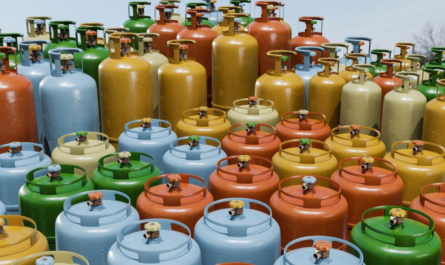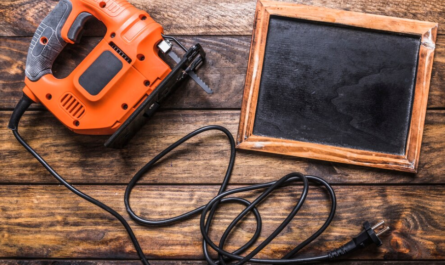Safety Talk: Hand Tools – Pliers and Wrenches
Hand tools like pliers and wrenches are essential for a wide range of tasks across industries. Despite their simplicity, improper use or handling of these tools can lead to injuries and equipment damage. This safety talk will outline the importance of safe practices, proper selection, maintenance, and techniques for using pliers and wrenches effectively and safely.
1. Importance of Hand Tool Safety
- Prevalence of Use: Pliers and wrenches are among the most commonly used tools in workplaces. Their frequent use increases the likelihood of accidents if safety protocols are not followed.
- Potential Risks: Misusing these tools can cause injuries like cuts, bruises, pinched skin, sprains, or even eye injuries from flying parts. Poor handling can also damage the tools or the materials being worked on.
- Benefits of Safe Practices: Proper use ensures worker safety, extends the tool’s lifespan, and maintains efficiency in operations.
2. Types of Pliers and Wrenches
Understanding the specific uses of different types of pliers and wrenches is critical for safe and effective operation.
- Pliers:
- Slip-Joint Pliers: Adjustable for gripping a range of objects.
- Needle-Nose Pliers: Ideal for precision work in tight spaces.
- Cutting Pliers: Designed to cut wires and other materials.
- Locking Pliers (Vise-Grips): Useful for holding objects firmly.
- Wrenches:
- Adjustable Wrenches: Versatile for bolts of varying sizes.
- Socket Wrenches: Used for loosening or tightening bolts with a ratcheting mechanism.
- Pipe Wrenches: Designed to grip and turn cylindrical objects like pipes.
- Torque Wrenches: Allow precise tightening to specified torque levels.
3. Common Hazards
- Slipping or Losing Grip: Tools slipping off fasteners or materials can cause hand injuries or damage surrounding areas.
- Flying Objects: Broken pieces of tools or materials can become projectiles.
- Pinching Injuries: Poor handling of pliers can pinch fingers or skin.
- Overexertion: Using excessive force on wrenches or pliers can lead to strain injuries or tool breakage.
- Improper Fit: Using the wrong tool size can lead to slipping and potential injury.
4. Safe Practices for Pliers
- Choose the Right Type:
- Match the pliers to the task. For instance, use cutting pliers for cutting and needle-nose pliers for precision.
- Avoid using pliers as a substitute for other tools, such as wrenches, to avoid damage or accidents.
- Inspect Before Use:
- Check for cracks, rust, or wear in the handles or jaws.
- Ensure the pivot points move smoothly without excessive looseness or tightness.
- Grip Properly:
- Use the handles, not the jaws, to apply force.
- Maintain a firm but comfortable grip to avoid fatigue.
- Avoid Overloading:
- Do not use pliers on bolts or materials beyond their rated capacity.
- Never extend the handles to gain extra leverage.
- Eye Protection:
- Wear safety goggles when cutting wires or using pliers near brittle materials to protect against flying fragments.
5. Safe Practices for Wrenches
- Select the Correct Wrench:
- Use the appropriate size and type of wrench for the fastener.
- Ensure the adjustable jaw of an adjustable wrench fits snugly against the fastener to prevent slipping.
- Inspect for Damage:
- Check for cracks, warping, or damaged jaws that can compromise the tool’s functionality.
- Verify that adjustable wrenches operate smoothly and securely lock into position.
- Apply Force Properly:
- Pull the wrench toward you to reduce the risk of slipping and losing balance.
- Avoid using a wrench as a hammer or prying tool.
- Leverage Caution:
- Never use cheater bars or other makeshift extensions to increase leverage. This can cause the tool to fail or result in over-tightening.
- Use Torque Wrenches Correctly:
- Follow manufacturer instructions for torque settings.
- Avoid exceeding specified limits to prevent damage to bolts or machinery.
6. Tool Maintenance
- Cleanliness: Wipe tools after use to remove dirt, grease, or debris.
- Lubrication: Apply light oil to pivot points on pliers and the moving parts of wrenches to ensure smooth operation.
- Storage: Store tools in a dry, organized manner to prevent rust and accidental damage.
- Sharpening and Alignment: For cutting pliers, keep cutting edges sharp and properly aligned to ensure effectiveness.
7. Ergonomics and Safe Handling
- Proper Posture:
- Use tools at a comfortable working height to reduce strain on the back and arms.
- Avoid awkward angles that can cause hand fatigue or reduce control.
- Handle Design:
- Choose tools with cushioned, non-slip grips to enhance comfort and safety during prolonged use.
- Take Breaks:
- Regular breaks can help prevent repetitive strain injuries when using tools for extended periods.
8. Workplace Guidelines
- Training: Ensure all workers are trained on proper tool selection, use, and maintenance.
- Tool Inspection: Incorporate regular tool inspections into the workplace safety checklist.
- Signage: Display clear instructions or warnings in tool storage areas to remind workers of best practices.
9. Emergency Procedures
- Injury Response:
- If a worker suffers an injury, such as a cut or pinched finger, administer first aid immediately.
- For serious injuries, seek professional medical assistance.
- Report Damaged Tools:
- Immediately tag and remove defective tools from service to prevent accidents.
10. Key Takeaways
- Use Tools Correctly: Always match the tool to the task and avoid makeshift solutions.
- Inspect and Maintain: Regular inspection and proper maintenance ensure safety and tool longevity.
- Protect Yourself: Wear appropriate personal protective equipment, like gloves and goggles.
- Avoid Overexertion: Use tools within their capacity and employ proper techniques to reduce physical strain.
By following these safety principles, workers can effectively use pliers and wrenches to complete tasks safely and efficiently. Remember, tools are only as safe as the hands that use them—prioritize safety to avoid unnecessary risks.
Omada Cordless Impact Wrench, Brushless Motor 20V 4.0AH 2 batteries (3-4 hours) Torque:380 Nm
“Start Your Website Journey Today – Exclusive Hostinger Discounts!”









